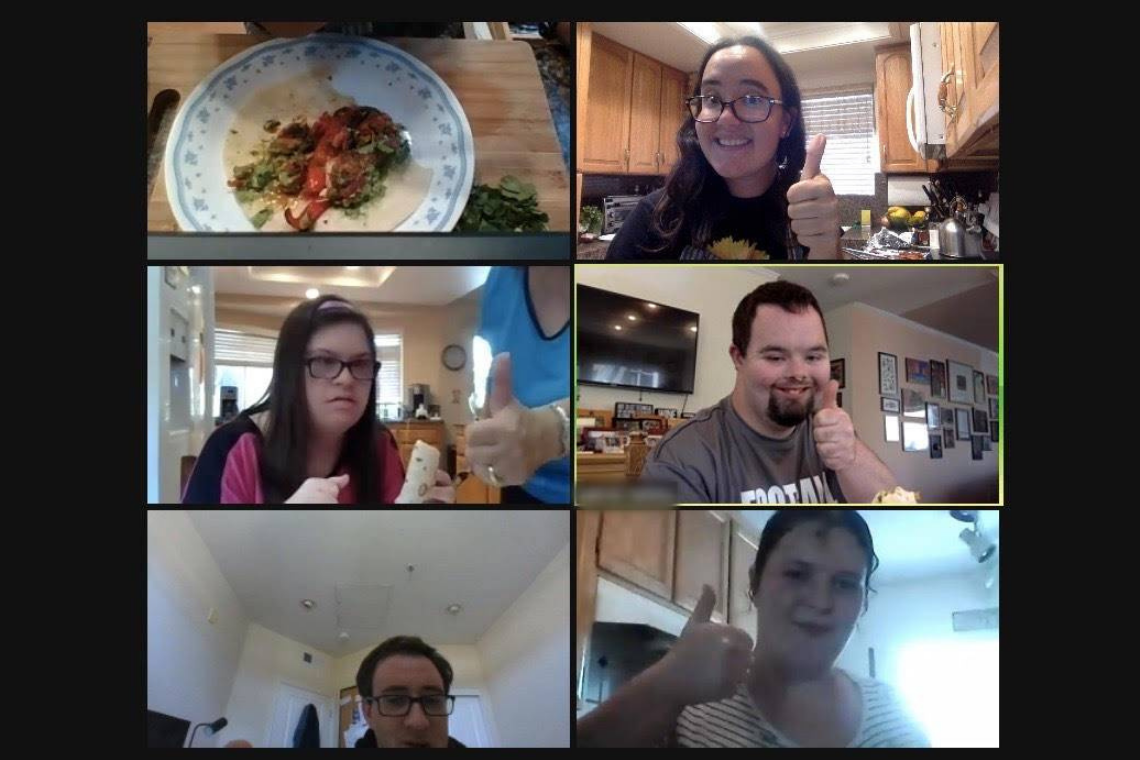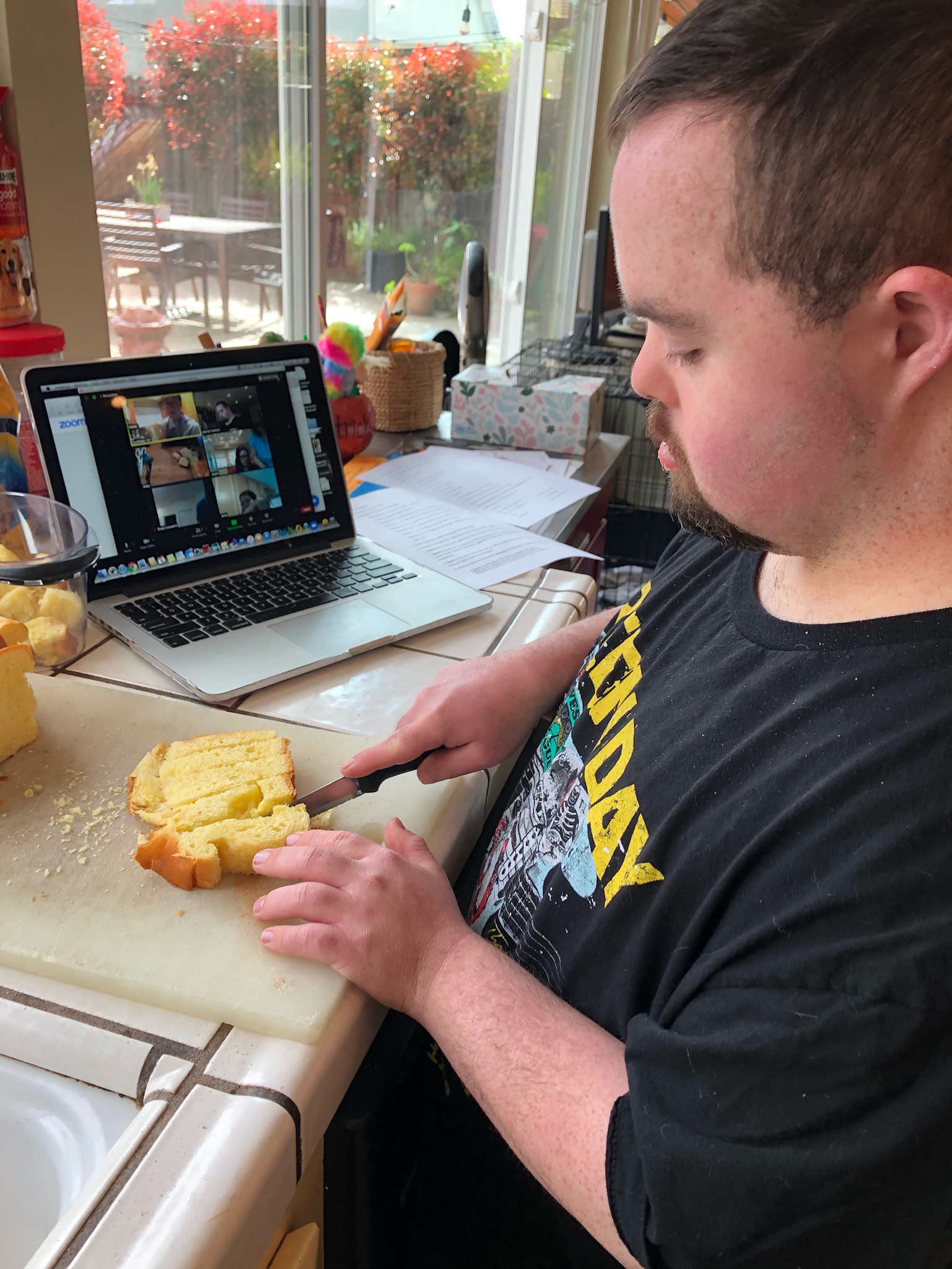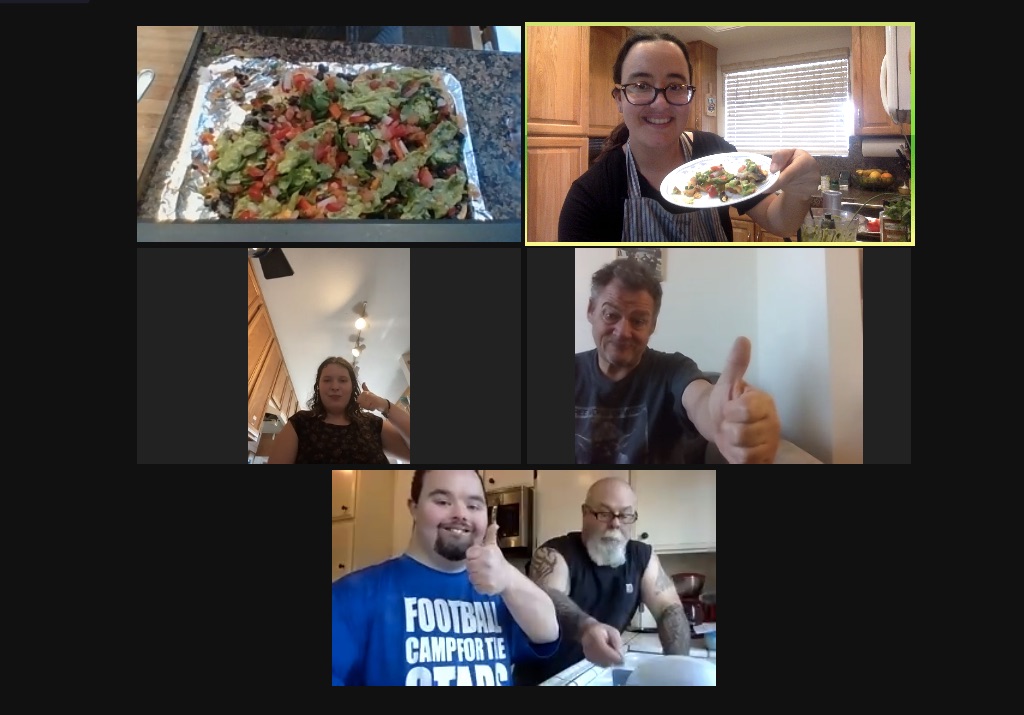Simple Substitutions for Stovetop Cooking
September 8, 2021

Fall is right around the corner, which always gets me thinking about hearty, warm dishes I like to cook to fend off the chill of cooler weather. While many of these dishes typically require the use of a stovetop, I know that not all folks are comfortable using one. Thankfully, there are many healthy, delicious, and warm meals that can be made without having to use a stovetop. Here are several alternatives you can try:
Toaster Oven
Toaster ovens are a great substitute for stovetops and ovens for a variety of reasons. They are smaller, and are helpful when you only need to heat up a small amount. They can also help with portion control if you are only cooking for one or two people, as the sheet pan for a toaster oven is smaller than the sheet pan for a regular-sized oven.
 If you’ve attended any of my cooking classes, you may already know some easy toaster oven recipes! One participant-favorite was my oven-baked French toast. While French toast can also be made on a stovetop, a toaster oven is a great alternative to prepare this quick and yummy breakfast.
If you’ve attended any of my cooking classes, you may already know some easy toaster oven recipes! One participant-favorite was my oven-baked French toast. While French toast can also be made on a stovetop, a toaster oven is a great alternative to prepare this quick and yummy breakfast.
Here you can see a picture of Patrick, who is a cooking class participant, preparing his French toast during a recent class.
When you’re using a toaster oven, keep in mind that they heat up much faster than traditional ovens. Your food may cook a bit faster, so be sure to keep an eye on it as you cook! A good rule of thumb to check if your food is done in a toaster oven is to check on it halfway through its traditional oven cooking time, and decide from there how much longer it needs to cook. Remember the pan is hot, so wear oven mitts to protect your hands when removing the tray.
Oven
 While the toaster oven is awesome for cooking quicker, smaller portions, you may prefer cooking in a regular oven when preparing larger amounts of food. There are a lot of recipes that are cooked on the stovetop that can easily be modified for an oven instead, such as the baked French toast example I mentioned above, or the loaded nachos we made in cooking class.
While the toaster oven is awesome for cooking quicker, smaller portions, you may prefer cooking in a regular oven when preparing larger amounts of food. There are a lot of recipes that are cooked on the stovetop that can easily be modified for an oven instead, such as the baked French toast example I mentioned above, or the loaded nachos we made in cooking class.
One cooking class participant, Shannon, prefers not to use the stovetop to prepare her meals, and opts to use the oven instead. One meal she enjoyed learning to make in cooking class was Sheet Pan Fajitas. All the ingredients can be added together on a sheet pan, put in the oven, and cooked without the need of a stove! Sheet Pan Fajitas are also nutritionally balanced, with veggies, protein, and carbohydrates all coming together for a tasty meal. Shannon said she could definitely see herself making them in the future. Give the recipe a try yourself!
Electric Grills
Electric grills, such as the George Foremen Grill, are another great stovetop alternative. Electric grills can cook food evenly on both sides, without the need to flip the food with a spatula. They are also a quick way to grill food when you don’t have an outdoor grill available to you. Electric grills are designed to be compact and portable, so you can place them at a height that is best for you to cook at, rather than being stuck with the set height of the stove. With electric grills, you can grill individual ingredients like vegetables or chicken to get nice, even sear lines on your food, or put a mostly composed meal in the grill for that final toasting, like with a panini or grilled cheese.
Induction Cooktop
 Induction cooktops are another lovely stovetop alternative if you need to cook something that traditionally requires a stovetop, but you are wary of fire. Induction cooktops are portable, flat heating surfaces that plug into a regular power outlet. You set your pot or pan on top of the induction cooktop, and it heats the pot or pan directly, with electricity, rather than with a flame like traditional stovetops. This means that the pot or pan on the cooktop will heat up, (as long as it’s touching the induction cooktop) but the stove itself will not get hot. Some folks like this alternative because it means they can have a relaxing, flame-free cooking experience without worrying about burning themselves on the stove. Be aware, however, that the induction cooktop will be warm to the touch if used for a long time, so it’s best not to touch the cooktop until it has some time to cool after cooking.
Induction cooktops are another lovely stovetop alternative if you need to cook something that traditionally requires a stovetop, but you are wary of fire. Induction cooktops are portable, flat heating surfaces that plug into a regular power outlet. You set your pot or pan on top of the induction cooktop, and it heats the pot or pan directly, with electricity, rather than with a flame like traditional stovetops. This means that the pot or pan on the cooktop will heat up, (as long as it’s touching the induction cooktop) but the stove itself will not get hot. Some folks like this alternative because it means they can have a relaxing, flame-free cooking experience without worrying about burning themselves on the stove. Be aware, however, that the induction cooktop will be warm to the touch if used for a long time, so it’s best not to touch the cooktop until it has some time to cool after cooking.
Induction cooktops only work with certain types of cookware, such as cast-iron pots or pans, or those with magnetic grade stainless steel on the bottom. Most pots or pans note if they are induction ready, but another way to check is to hold a magnet up to the bottom of the pot or pan. If the magnet sticks easily, then the pan will work with an induction stove. But if the magnet sticks weakly or not at all, that cookware will probably not work on an induction cooktop. Another bonus of the induction cooktop is its small and convenient size, allowing it to be placed on a lower surface if that makes it easier for folks to access it.
With so many stovetop cooking alternatives available, I hope you’re inspired to make your own hearty, warm dish this fall – and be sure to give the Sheet Pan Fajitas recipe a try!
Inspired by this article? Donate today!
Story by: Abby Lourenco, Non-Residential Programs Manager
Contributing Writer: Kaitlyn Kuehn, Writer